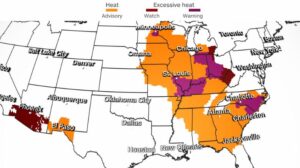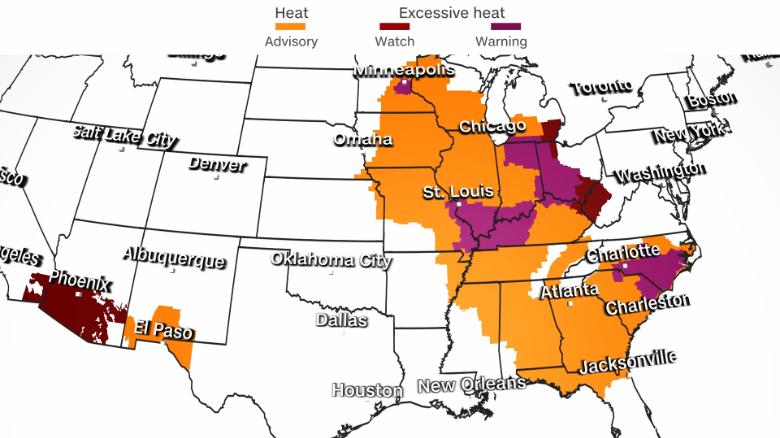
Of all the natural disasters, heat is the No. 1 killer, studies show. And as temperatures continue to rise because of the climate crisis, scientists expect it to make even more people ill.
Heatwaves are already happening more often. In the 1960s, Americans saw about two heatwaves a year; by the 2010s, there were six per year, according to the US Environmental Protection Agency.
Heat-related illness is the leading cause of death and disability among US high school athletes, according to the US Centers for Disease Control and Prevention. But it can be a problem for anyone taking part in everyday activities like mowing the lawn or going for a walk.
Two of the most common heat-related conditions are heatstroke and heat exhaustion.
With both conditions, emergency help is needed quickly. While waiting for assistance, bystanders can try to cool the person by moving them to the shade and giving them with water.
Extreme high temperatures can also put significant strain on the heart or make breathing more difficult.
I – Word Understanding
Heatstroke vs. Heat Exhaustion
Heatstroke – a situation where the body cannot cool itself, temperature keeps Rising quickly
Heat Exhaustion – happens when the body loses too much water thru excessive sweating
Bystander – spectator; a person who is present but not taking part in a situation/event
II – Have Your Say
1, How is the temperature in your area now? How do you protect yourself from summer heat? What are the activities you do or avoid doing in summer?
2, Who do you think are the most vulnerable to this worsening heat? What is the situation in your country?
3, What efforts do you hope the government would make to relieve global warming?
As ordinary citizens, what should we do to help?
885 Extreme heat is bad for everyone’s health — and it’s getting worse


